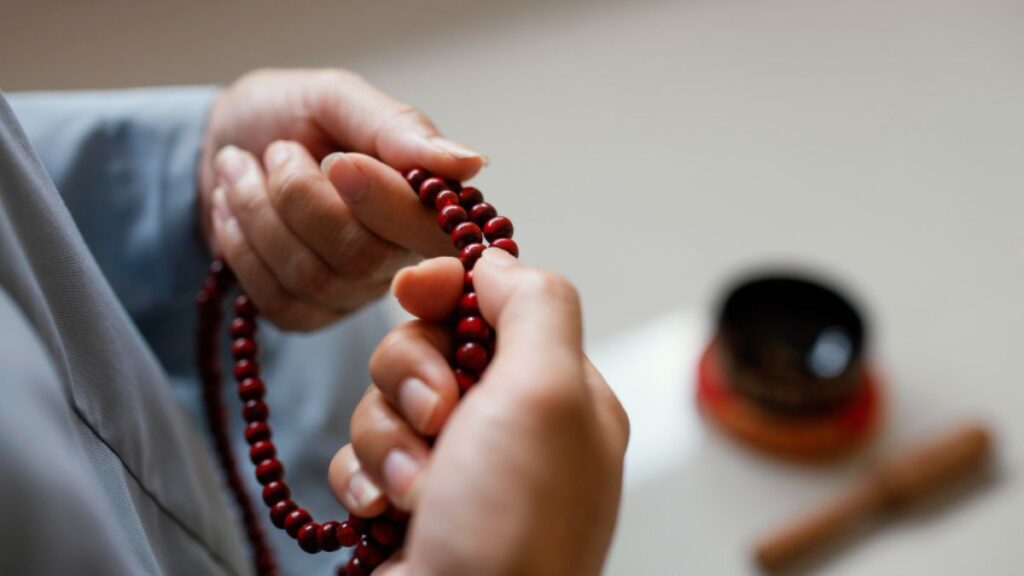Prayer beads have been a part of human spiritual life for centuries, serving as a tangible tool to connect with the divine. Whether used in Christianity, Buddhism, Islam, Hinduism, or other faiths, prayer beads are more than just decorative items—they are deeply symbolic instruments that help focus the mind, calm the soul, and deepen one’s spiritual journey. Across continents and cultures, people have turned to these small, often beautifully crafted objects to aid in their prayers, meditations, and reflections.
In this comprehensive guide, we will explore everything you need to know about prayer beads , from their historical origins and cultural variations to their modern-day uses and benefits. We’ll also take a closer look at the different types of prayer beads, materials used, and how they can be incorporated into daily spiritual practices.
The Historical Roots of Prayer Beads
The use of prayer beads dates back thousands of years, with early examples found in ancient civilizations such as Egypt, Greece, and India. These early forms were not only used for religious purposes but also as symbols of status, protection, and personal devotion.
Ancient Beginnings
In ancient India, Japa Mala —a string of 108 beads—was used by Hindus and Buddhists for mantra repetition. This tradition continues today, with many practitioners using malas made of rudraksha seeds, sandalwood, or gemstones believed to carry specific energies.
Similarly, in ancient Rome and Greece, beads were sometimes strung together and used in devotional practices, although not always for formal prayer. It was in the Christian world, however, that prayer beads began to take on a more structured form.
The Rosary in Christianity
One of the most well-known forms of prayer beads is the Catholic Rosary. Its development can be traced back to the Middle Ages when monks recited all 150 Psalms of the Bible. To make this practice accessible to laypeople who could not read, the Hail Mary was substituted for each Psalm, eventually evolving into the Rosary we recognize today.
The Rosary consists of 59 beads divided into sections representing mysteries of the faith, helping the user meditate on key events in the lives of Jesus and Mary. This structure has influenced similar prayer systems in other traditions.
Cultural Variations of Prayer Beads
While prayer beads share a common purpose across cultures—to facilitate focused prayer—they vary widely in design, number, and usage. Let’s explore some of the major traditions:
|
Christianity (Catholic)
|
Rosary
|
59
|
Meditation on Mysteries of Faith
|
|
Buddhism
|
Japa Mala
|
108
|
Mantra Recitation
|
|
Hinduism
|
Japa Mala
|
108
|
Chanting Sacred Mantras
|
|
Islam
|
Misbaha / Tasbih
|
99 or 33
|
Reciting Praises of Allah
|
|
Orthodox Christianity
|
Komboskini
|
33–100+
|
Repetition of Prayers
|
|
Sikhism
|
Mala
|
108
|
Meditative Prayer
|
The Buddhist and Hindu Japa Mala
In both Hinduism and Buddhism, the Japa Mala is an essential spiritual tool. Traditionally made of 108 beads, it is used for chanting mantras like “Om” or “Om Namah Shivaya.” Each bead represents a single repetition, allowing the practitioner to keep count without losing mental focus.
The number 108 holds deep significance in Indian spiritual traditions—it appears in astronomy, mathematics, and even yoga philosophy. Some believe that repeating a mantra 108 times brings the practitioner closer to the divine.
Islamic Tasbih (Misbaha)
Muslims often use a set of 33 or 99 beads called a Tasbih or Misbaha . These beads are used to recite phrases like “Subhanallah” (Glory be to God), “Alhamdulillah” (Praise be to God), and “Allahu Akbar” (God is Great). The 99 beads correspond to the 99 names of Allah, making the device both practical and symbolic.
The Orthodox Komboskini
Eastern Orthodox Christians use a knotted rope known as a Komboskini , which typically contains between 33 and 100 knots. It is used for repetitive prayer, especially the Jesus Prayer: “Lord Jesus Christ, Son of God, have mercy on me, a sinner.”
This prayer is considered central to the Hesychast tradition. A mystical movement within Eastern Orthodoxy that emphasizes inner stillness and communion with God.
Materials Used in Making Prayer Beads
Prayer beads are crafted from a wide variety of natural and synthetic materials, each chosen for its texture, durability, and symbolic meaning. Here are some of the most commonly used materials:
- Wood : Sandalwood is popular in Hindu and Buddhist traditions due to its calming scent and spiritual associations.
- Seeds : Rudraksha seeds are widely used in Hindu Malas and are believed to carry protective energy.
- Gemstones : Crystals like amethyst, rose quartz, and lapis lazuli are often used in modern spiritual beads for their healing properties.
- Beaded Strings : Traditional Catholic rosaries are often made of glass, plastic, wood, or metal beads.
- Metal : Some Islamic Tasbihs are made of brass or silver, adding a weighty feel to the prayer process.
- Natural Elements : Coral, bone, and ivory have historically been used, though ethical concerns now limit their use.
Each material contributes to the overall experience of using prayer beads , offering tactile sensations that enhance mindfulness and spiritual connection.
How to Use Prayer Beads Effectively
Using prayer beads doesn’t require any special training, but understanding their traditional methods can deepen your experience. Here’s a step-by-step guide tailored to different traditions:
Using a Catholic Rosary
- Begin with the crucifix and say the Apostles’ Creed.
- Move to the first large bead and pray the Our Father.
- On the next three small beads, say the Hail Mary three times.
- Say the Glory Be on the next large bead.
- Announce the First Mystery and pray the Our Father on the next large bead.
- Repeat Hail Marys on the following ten beads while meditating on the mystery.
- Continue through all five decades, ending with the Hail Holy Queen and sign of the cross.
Japa Mala
- Hold the mala in your right hand, draped over your fingers.
- Begin at the bead next to the guru bead (the larger bead that marks the beginning/end).
- As you chant your mantra, move your thumb to the next bead.
- Do not skip over the guru bead while counting.
- Once you complete 108 repetitions, reverse direction or start again.
Using an Islamic Tasbih
- Hold the Tasbih in your right hand.
- Start with the phrase “Subhanallah” and move one bead after each repetition.
- Repeat “Alhamdulillah” and “Allahu Akbar” alternately until you reach the end.
- Many Muslims repeat this cycle three times, totaling 99 praises.
Benefits of Using Prayer Beads
There are numerous physical, mental, and spiritual benefits associated with the regular use of prayer beads . Here are some of the most notable:
Enhances Focus and Mindfulness
The repetitive motion of moving from bead to bead helps anchor the mind, reducing distractions during prayer or meditation. This tactile engagement encourages deeper concentration and presence.
Reduces Stress and Anxiety
Studies have shown that rhythmic, repetitive actions—like counting beads—can lower heart rate and blood pressure, promoting relaxation and emotional balance.
Deepens Spiritual Connection
By providing a structured way to engage in prayer or meditation, prayer beads help individuals develop a stronger, more consistent spiritual practice.
Encourages Consistency
Because they are portable and easy to use, prayer beads make it easier to maintain a daily spiritual routine, even amidst a busy schedule.
Promotes Introspection
Whether used for silent reflection or vocal prayer, prayer beads create a sacred space for self-exploration and inner growth.
Choosing the Right Prayer Beads for You
Selecting the perfect set of prayer beads depends on your spiritual tradition, personal preferences, and intended use. Here are some factors to consider:
Purpose
Are you looking to meditate, pray formally, or simply find peace? Your answer will guide you toward the appropriate type of beads.
Material
Choose a material that resonates with you. If you’re drawn to natural elements, opt for wood or gemstone beads. For a minimalist approach, plastic or metal may suit better.
Size and Comfort
Some beads are designed to fit snugly around the wrist. While others are long enough to drape over the fingers. Consider how comfortable the beads feel in your hands.
Aesthetic Appeal
Many people choose prayer beads based on beauty and symbolism. Aesthetically pleasing beads can enhance your motivation to use them regularly.
Cultural Relevance
If you follow a specific spiritual path, it’s beneficial to select beads that align with your tradition for authenticity and deeper connection.
Caring for Your Prayer Beads
Like any cherished spiritual tool, prayer beads deserve care and respect. Here are some tips to ensure they last and continue to serve you well:
- Avoid Moisture : Keep your beads dry to prevent mold. Especially if they’re made of natural materials like wood or seeds.
- Clean Gently : Wipe them with a soft cloth after use. Avoid harsh chemicals.
- Store Properly : Wrap them carefully to avoid tangling and store in a clean, sacred space.
- Charge Energies (Optional) : Some users like to place their beads under moonlight or sunlight to cleanse and recharge their energies.
Modern Innovations in Prayer Beads
In recent years, prayer beads have seen a revival, especially among those seeking mindfulness and spiritual grounding outside traditional religious contexts. Designers now offer contemporary versions that blend functionality with fashion:
- Wrist Malas : Compact versions of Japa Malas worn as jewelry.
- Pocket Rosaries : Small, discreet rosaries for easy portability.
- Digital Prayer Apps : Virtual alternatives for those who prefer technology.
These innovations make prayer beads accessible to a broader audience, including those who may not belong to any specific religious tradition but appreciate the meditative benefits.
Conclusion: Embracing the Timeless Power of Prayer Beads
Prayer beads are more than just strings of beads—they are bridges between the physical and spiritual realms. Whether you’re a devout follower of a particular faith or someone exploring spirituality. Incorporating prayer beads into your life can bring peace, clarity, and a sense of connection.
From ancient rituals to modern mindfulness practices, prayer beads continue to hold relevance across generations. Their simplicity, versatility, and profound impact make them a timeless companion on the spiritual path.
So, whether you’re holding a Catholic Rosary, a Buddhist Mala, or an Islamic Tasbih, remember that each bead carries the weight of intention, devotion, and love. In every touch, there is a whisper of the divine.







